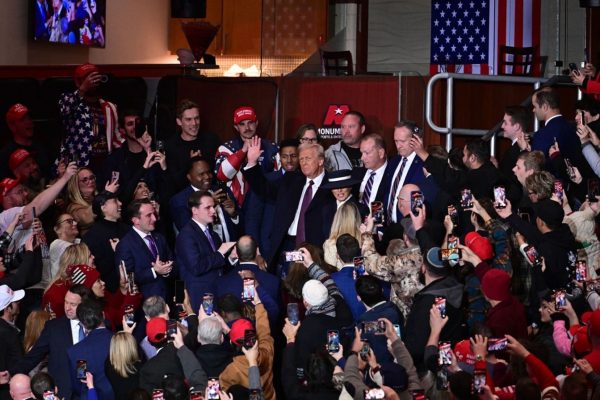A March to Remember
It all began in a spot that seemed a bit more unusual than most would’ve imagined. Yes, they have a large African-American population; however, contrary to popular belief, Ferguson is a relatively stable, working and middle-income community with very low violent crimes per year when compared to nearby neighborhoods. But like a spark in gun powder, its flames explosively ignited a widespread inferno in areas more volatile than Ferguson.
On August 9th, 2014 the chain of events progressed as follows:
11:54 a.m. Michael Brown and Dorian Johnson, unarmed African American teenagers, leave Ferguson Market and Liquor. The surveillance video shows Mr. Brown stealing some cigarillos before the pair walks along West Florissant Avenue and then in the middle of the street on Canfield Drive.
12:01 p.m. Officer Darren Wilson arrives alone in his police S.U.V. Speaking through his window, he tells the two men to move to the sidewalk and sees that Mr. Brown fits the description of a suspect in the convenience store theft.
12:02 p.m. Officer Wilson makes a call to the dispatcher about the two men. He positions his S.U.V. to block the two men as well as traffic.
At this point the gray area pours across Canfield Drive. There is an altercation between Officer Wilson and Mr. Brown, who is standing at the window of the vehicle. Officer Wilson fires two shots from inside the car, one likely grazing Mr. Brown’s thumb, and the other missing him.
A mixed group of witnesses reported seeing the altercation. Some said Mr. Brown punched Officer Wilson, while Mr. Brown was partly inside the vehicle. At least one witness said no part of Michael Brown was ever inside the vehicle, while Officer Wilson, in his own testimony, claimed that Mr. Brown not only reached into the vehicle, but fought for his gun.
The medical examiner’s DNA evidence did little more than support the ambiguity of this incident. Examiners found Mr. Brown’s blood or other DNA outside the driver’s door, outside the left rear passenger door, inside the driver’s door, on the upper left thigh of Officer Wilson’s pants, and on his shirt and weapon. Officer Wilson also had some redness and swelling of the face.
The haziness continues to progress as Mr. Brown runs east with Officer Wilson pursuing him on foot. The teen stops and turns toward the police officer, who also stops. He moves toward Wilson, who fires several more shots, fatally wounding Mr. Brown.
Once again, the movements of the two are subject to the uncertainty of the conflicting witness reports. Some said Mr. Brown never moved toward Officer Wilson when he was shot and killed. The St. Louis County prosecutor said the most credible witnesses, however, reported that he charged toward the officer. Officer Wilson also added in his testimony that Mr. Brown charged at him, making “a grunting, like aggravated sound.”
Also in dispute is the body language that Michael Brown expressed to the officer. Some sat he had his hands in the air, while others say that he did not or held his arms out to the side, in front of him, by his shoulders, or in a running position.
All of this was to be sorted out in the grand jury case against Officer Wilson in the months that would follow the incident. But this case, in everything from its time to its secrecy would be run differently than any other previous cases.
A jury of nine whites and three African Americans met for 25 days over three months instead of the standard one day. Rather than providing a charge or range of charges to ask the jury to indict based on, the St. Louis county prosecutor, Robert P. McCulloch, did not recommend a charge or charges against Officer Wilson. Even the number of witnesses, 60 when compared to the normal few who are called, showed the differences in this cases from many others of its type.
The grand jury does not usually hear testimony from the individual who may be charged. However, Officer Wilson not only testified, but answered questions in front of the court for four hours. Under Missouri law, grand jury activity is usually secret, although evidence from it can be submitted at a later trial. In the Wilson case, Mr. McCulloch released all the evidence and testimony after the grand jury made its decision.
The ringing of that sentence–“The grand jury has chosen not to indict Officer Wilson”– reverberated around Ferguson and around the nation. It prompted a backlash and scenes that eerily resembled the Civil Rights era: looted stores and businesses with broken glass, violent protestors held back by barricades, police demonstrations with tear gas and rubber bullets.
Americans staring slack-jawed at their TVs saw the clearest sign of what has been boiling since the day African Americans departed from the slave boats. The events in Ferguson have showed that while America has become more blended into gray, fine lines still cause friction between blacks and whites.
Dr. Martin Luther King Jr. once said, “Dark cannot drive out darkness; only light can do that. Hate cannot drive out hate; only love can do that.” It is the hope of Americans, regardless of background or beliefs, that race relations will improve. As the community heals, we can only hope that like in 1965 Selma, light will seep through the cracks of Canfield Drive and illuminate the recovery, rather than the tragedy, of a hopeful town.



